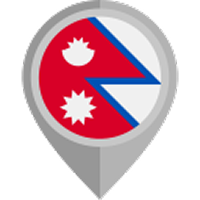Nepal vision | 16/02/2023
Every trekker has a very essential question in their mind at the time of the most adventurous trek, “How do I pick the best backpack for the Everest Base Camp Trek?â€. The base camp of the highest peak in the world, Mt. Everest(8,848m) is situated at the height of 5,364m (17,598ft). The Everest Base Camp trek lasts from 12 to 15 days on average. You’ll need a strong and durable backpack for the entire trekking days until the trek is completed. Hence, you must have a backpack that is comfortable and easy to carry and relax.
Mostly, Backpacks are designed to hold a specific amount of weight. The dimensions of the space and areas available inside the pack are referred to as the capacity of the bag. You must know that the Everest Base Camp trek is a tea house trek, a trek with most of the facilities like laundry, food, and tea house accommodations available throughout the trek. You don’t need to worry about bringing any primitive camping gear list as most of the products are easily available here.

You’ll need a backpack that fits your personal belongings. The belongings mostly consist of toiletries, clothes, daily needed items, and camera gear. The packing list for the Everest base camp trek consists of all the essentials that will be needed to trek to the Everest Base Camp trek.
Everest trekkers often have to carry things like drinking water, photographic equipment, clothing layers, and personal things in their packs. The packing list for the Everest Base Camp trek consists of a long list of materials you can go through. The packing list for the trip should be considered with some of the details you’ll need before purchasing it.
Everest Base Camp Trek Backpack
Before purchasing a backpack for Everest Base Camp, you must know that backpacks are a very important thing for the trek. If you get into detail about the structure of the backpack, it’ll help you to select the right backpack suitable for your trek. Choosing the best backpack for treks in Nepal must be on your priority list.

A backpack in a good shape is the most important thing to make the trip very enjoyable. Most of the structural features of a backpack are required for the Everest Base Camp trek to get maximum protection from the products and encouragement. Most people prefer to choose the one with more storage and usage characteristics. The storage and usage characteristics are also determined by the way you organize the belongings in your backpack as you’ll be carrying it throughout the trek.
While going for the Everest Base Camp trek or any other trek, you’ll need a backpack to keep all the stuff. The size of the backpack can be 65 to 75 liters. It is also necessary to carry all the things that are required for the whole trip. We have to put the layer-by-layer clothes, hats, socks, thermal wear, jackets, shoes & footwears, boots, sleeping bags, and another minimal requirement.
What brand of Backpack should be ideal?
When you go buying the backpack, you must consider that the size of the bag fits your height. As the load will be equally divided on the shoulder and hips if the size is correct as per the height. If the size gets unbalanced due to your height, the bag gets hung off from the shoulder. Presently, there are many brands and models in the market. You must choose the right one that is comfortable for you. You must go with something comfortable to carry especially for high altitude. Here is the list of some of the best backpacks for the Everest Base Camp Trek:
Where Can we buy the best backpack?
While choosing the backpack for the Everest Base Camp Trek, we have to consider many factors. Hence, there is no such thing as the best backpack for Everest Base Camp due to the fact. You’ll have to consider what you need, what your budget is, what features you are looking for, and many more. Your research for finding a backpack that will meet your needs is the best backpack. If you are going for the brand, go to its authorized outlets so that you get the original brand. We hope you find the bag within your budget and choice.
There are many shops in Thamel, Kathmandu where you can find backpacks a cheap prices. The local places have a variety of choices on the backpack to save money and still get the correct one. You can visit the following shops in Kathmandu which are well known for their products available at cheap prices.
- Kalapatthar Trekking Store- Cheap buy and retail shop
- Goreto Gear Traders- Rent or buy products
What to Pack for the Everest Base Camp Trek?
It is very necessary to carry the essentials while you go for the trek as you’ll be going for a long. Before leaving, you must double-check your backpack to make sure you haven't forgotten to pack anything crucial. Trekking to Everest Base Camp is named one of the most difficult treks. As a result, you must exercise caution when packing your bags.
Passport
It is very obvious that before departing for a foreign destination, you must have your passport with you. When granting permission to enter a foreign nation, you will require it. A passport is also necessary if you run into problems. The Everest Base Camp Trek requires permits. Hence, a Passport is required for traveling to Everest Base Camp for permits and at checkpoints. While we are en route to Everest Base Camp, you can forget yourself, but not your passport. Make sure that your passport is always zip-locked so that no liquid damage occurs while on the hike.
Travel Protection
Although insurance is not required for high-altitude treks, you are advised to obtain one in case of emergency. While traveling to a higher altitude, you could be hurt, ill, or experience altitude sickness. Because Everest Base Camp is considered a high-altitude trek in Nepal, you will require insurance. Make sure that your policies permit evacuation at 6,000 meters or lower.
Headgears
Protecting the head's internal organs is crucial throughout the climb to Everest Base Camp. You could develop a cough from high altitude due to strong winds and changing weather. If the headdresses are not properly packed, you risk being sunburned as well as becoming cold as the cold first spreads from head to toe. It is necessary to carry a woolen cap and neckband for headwear. You can carry a light beanie or head hat with you.
Handwear
You must carry handwear so that you don’t get any dryness and coldness of the hands while you hike. Sometimes the region gets so cold that you cannot even walk or touch objects in the cold without gloves. You must bring inner and outer gloves for your hands to avoid the extreme cold that spread to your inner body.

Clothing
Your body's clothing is the most important component during the trek or any other time during traveling. You should take clothes layer by layer since it permits moisture to travel slowly from one layer to the next. Depending on how many days of your EBC itinerary you have planned, pack your clothing. Make sure that you pack the base layers, trekking shirts, pants and shorts, breathable undergarments, fleece jackets, insulated jackets, hardshell jackets, and raincoats on your backpack for the Everest Base Camp climb.
Shoes
We all know that the Everest Base Camp is a chilly location. You won't be able to walk correctly or far without the proper footwear due to the extreme cold. Packing your bags with the right footwear is therefore vital. For the Everest Base Camp Trek, make sure you take hiking boots, trekking shoes or sandals, hiking socks, thick thermal socks, and gaiters as per the need.
Other essential components
In addition to shoes and clothing, you also need to pack other items. Personal belongings, prescription medications, cameras, flashlights, batteries, power banks, sanitary pads for ladies, trekking poles, sleeping bags, dry fruits, water bottles, purifiers, toothbrushes, etc, or any other components you’ll need to take to the trek must be carried.
Conclusion
We hope you get the tricks on the best backpack for the Everest Base Camp trek. We are always here to help you avoid any unnecessary baggage. We recommend you go to a physical store to get your hands on some backpacks and compare different sizes in person which will eventually help you to get the best size for you. If you have any questions or concerns about the Everest base camp trek, please contact us, Nepal Vision Treks & Expeditions for further queries.
FAQs
- How much can a backpack for the Everest Base Camp trek weigh?
For most of the porters, the weight limit for your main pack is 15kg (33 lbs) once on the trek. But this shouldn't be a problem as long as you don't buy too much stuff in the Namche Bazaar. You can take a spare stuff-sack or bag with you which will be useful for leaving behind the unnecessary stuff in Kathmandu. You can keep behind the gears not needed on the trek. Your luggage allowance on the plane is usually 20kg (44 lbs).
- What kind of sleeping bag is best for Everest Base Camp Trek?
You can take the sleeping bag 750-800 fill down bag rated to 0-20 degrees Fahrenheit. Ensure that the backpack is lightweight and warm.
- What are the essentials needed to climb Everest Base Camp?
The list of trekking equipment needed while climbing the Everest Base Camp are:
- Day pack ( average 25–35 liters)
- Waterproof Pack cover
- Sleeping bag comfortable to 0°F
- Waterproof hiking boots.
- Slippers if you need them while you stay
- LED headlamp with extra batteries.
- Trekking poles.
- What is the size of the duffel bag needed for Everest Base Camp?
You can take a Rucksack or duffel bag with you to the Everest Base Camp Trek. If you're wondering what size duffel bag is for Everest Base Camp, around 65 liters should be enough to adjust all the needed equipment.
- What is the base weight of a good backpack?
You might know that some backpackers define themselves based on their pack-base weight. If your base weight is under 10 pounds you are considered an ultralight backpacker. Similarly, you are a lightweight backpacker if your base weight is under 20 pounds. Most traditional backpackers will have a base weight of under 30 pounds.
- Is a sleeping bag needed for the Everest Base Camp?
A warm sleeping bag is much critical to keeping yourself warm and having a good night's sleep on an Everest Base Camp trek. The nights on your trek, especially in the high mountain regions, can get extremely cold, so, it's better if you carry a sleeping bag that ranges within your budget with you on the trek.
- How much time is needed for the Everest Base Camp? OR
How Long Is the Everest Base Camp Trek?
The standard Everest Base Camp Trek is a 130km round trip. The trip is mostly divided into 12-14 days. Among the 14 days, 8 days will be to climb up to the base camp where as the remaining days will be to climb down. Also, some days are always included to relax and acclimatize to the surrounding.
- How cold does the weather in Everest Base Camp get?
Temperatures might range from around 22 degrees in the height of summer to as low as -5 degrees in winter during the day. Also, during the winter months, the temperatures might range from -15 to around 4 degrees in the summer months.
- Which route is considered the best for Everest Base Camp?
The route to Everest Base Camp that starts from Lukla and takes us further through Phakding, Namche Bazar, Tengboche, Dingboche, Dughla, Lobuche, and Gorak Shep before reaching Everest Base Camp is considered the best. For the route, the return route is the same though the views are just as enjoyable as you walk in the opposite direction.
- How many base layers should we pack for the Everest Base Camp?
It is important to pack multiple layers for your Everest Base Camp trek as it goes to a very high altitude. You can dress in layers so that you can peel them off when you get hot, and add them as it gets cold. It's better to take three layers, Base Layers, Merino Wool top, and bottoms









